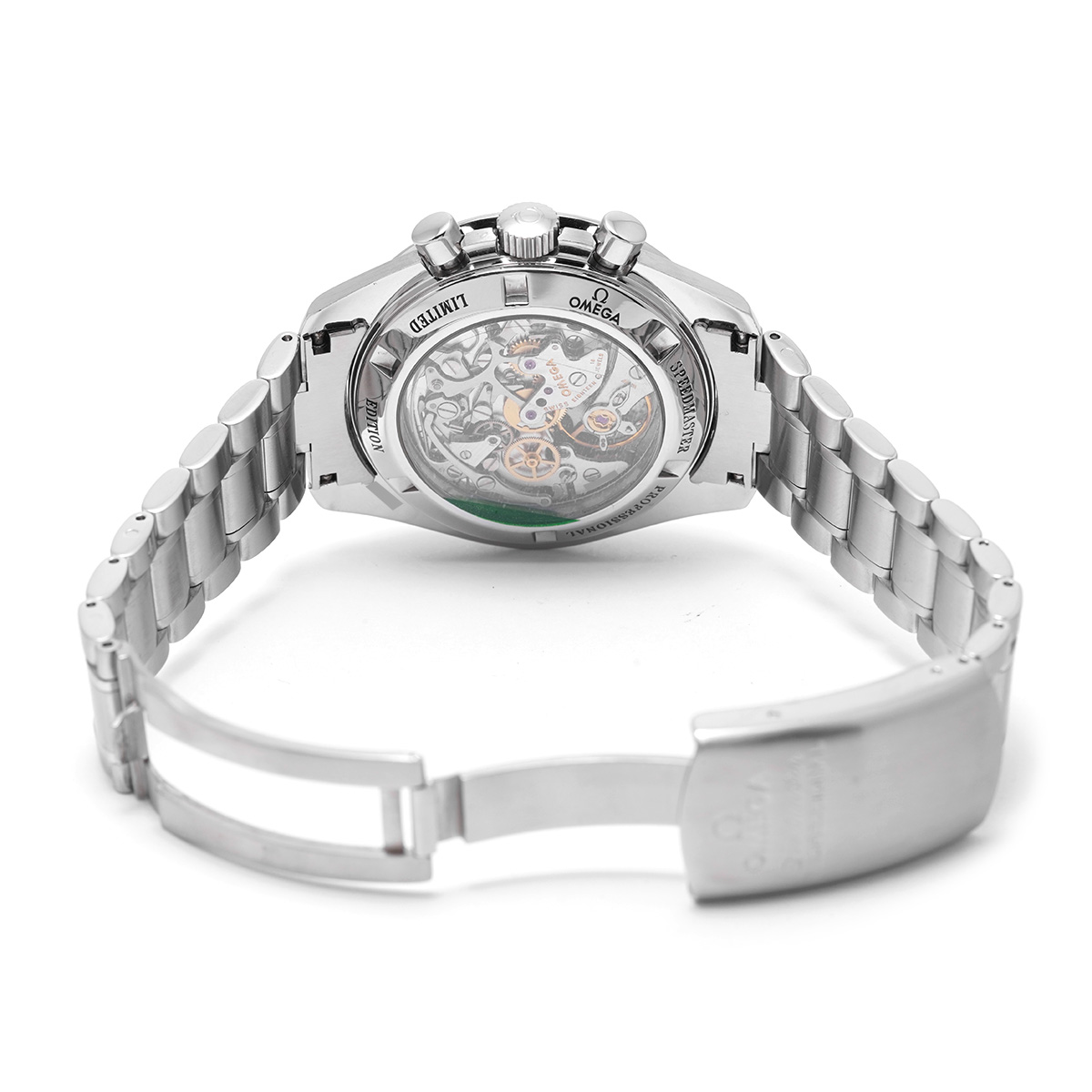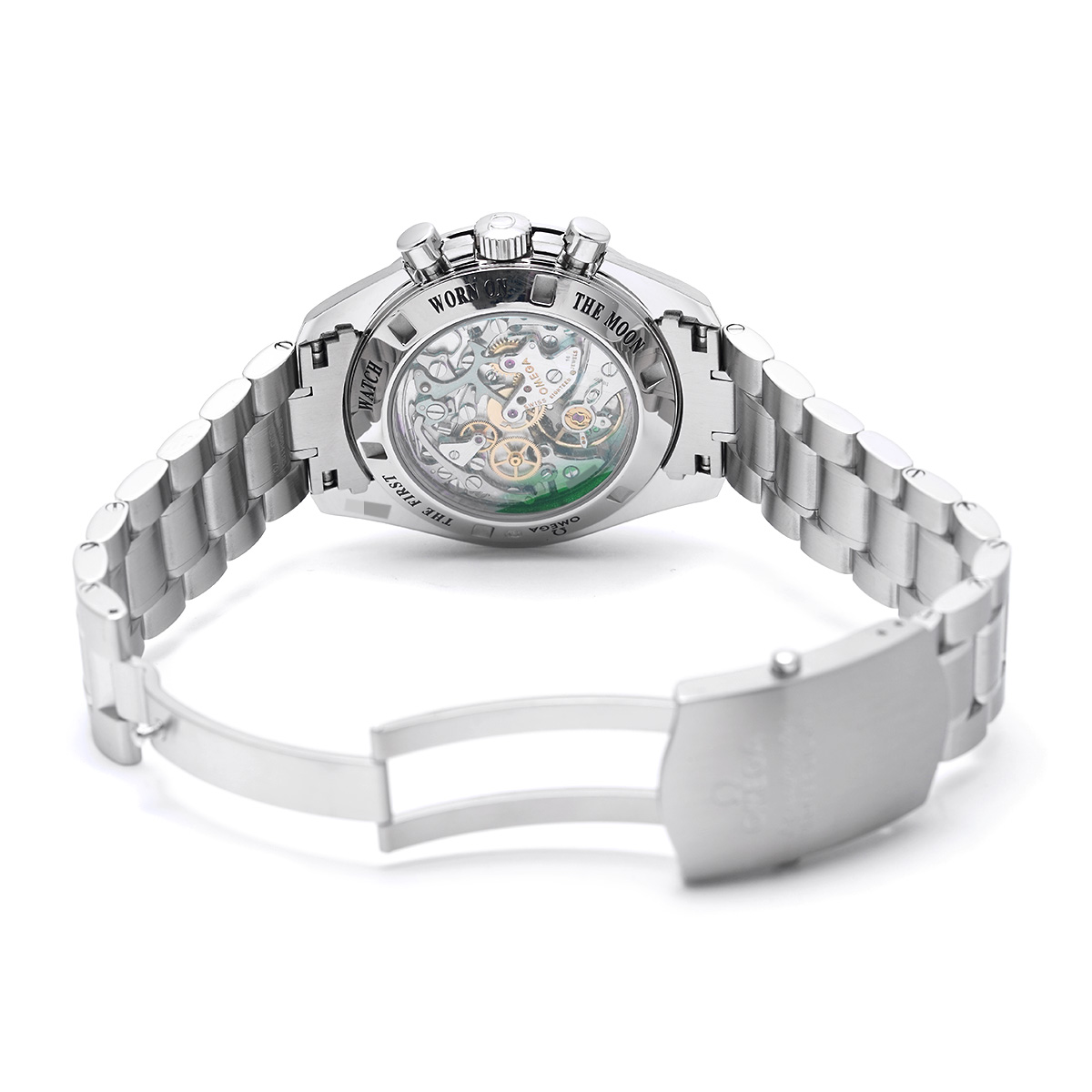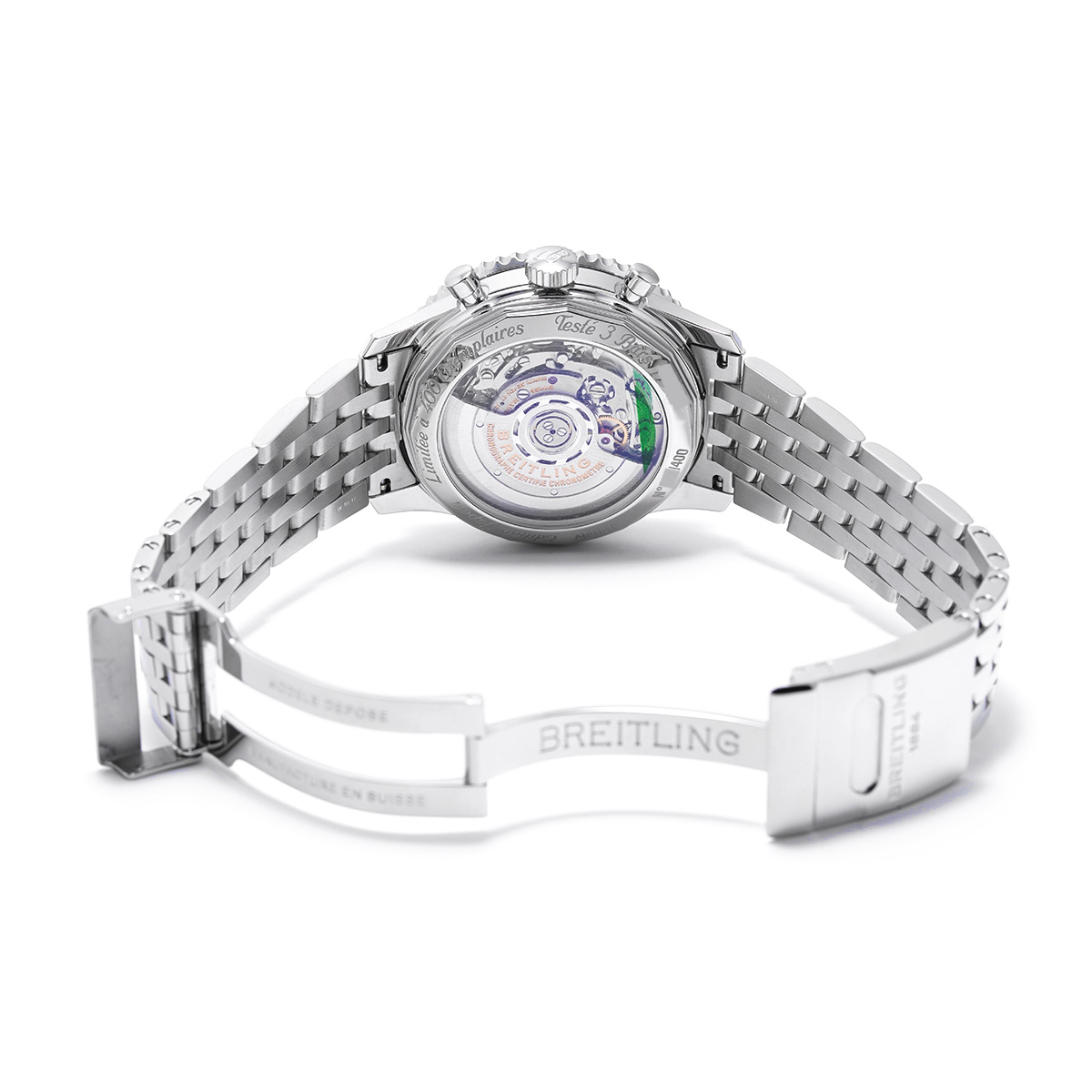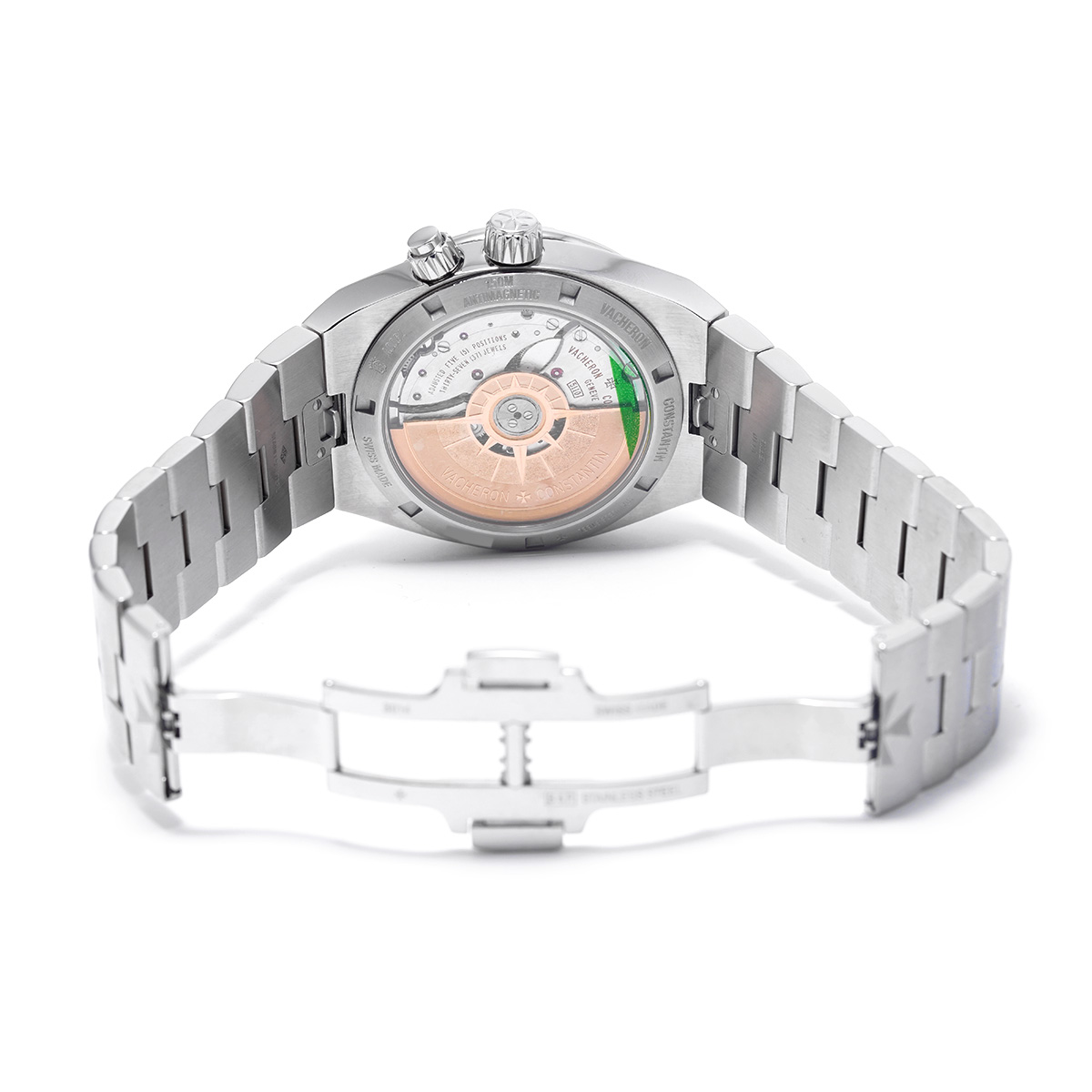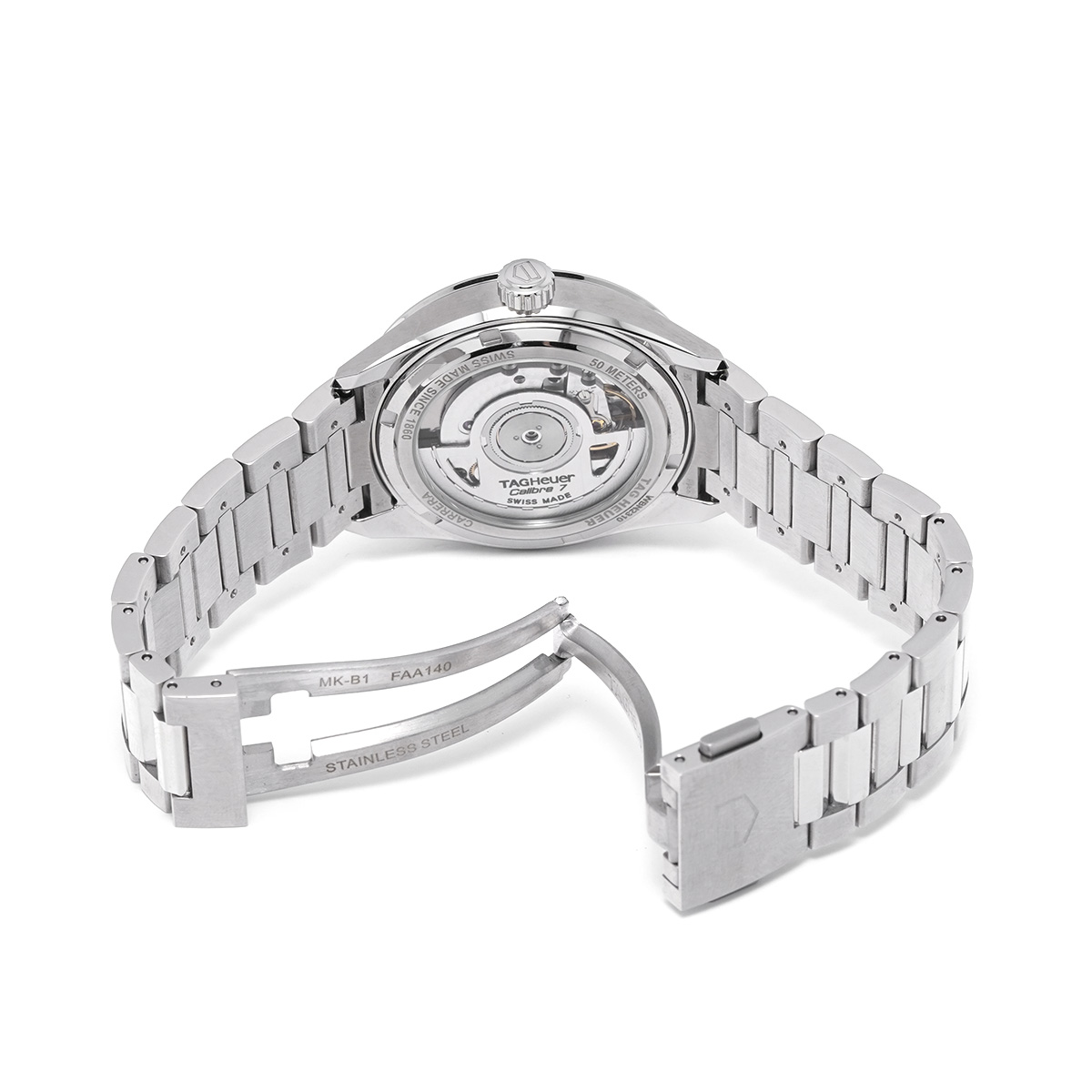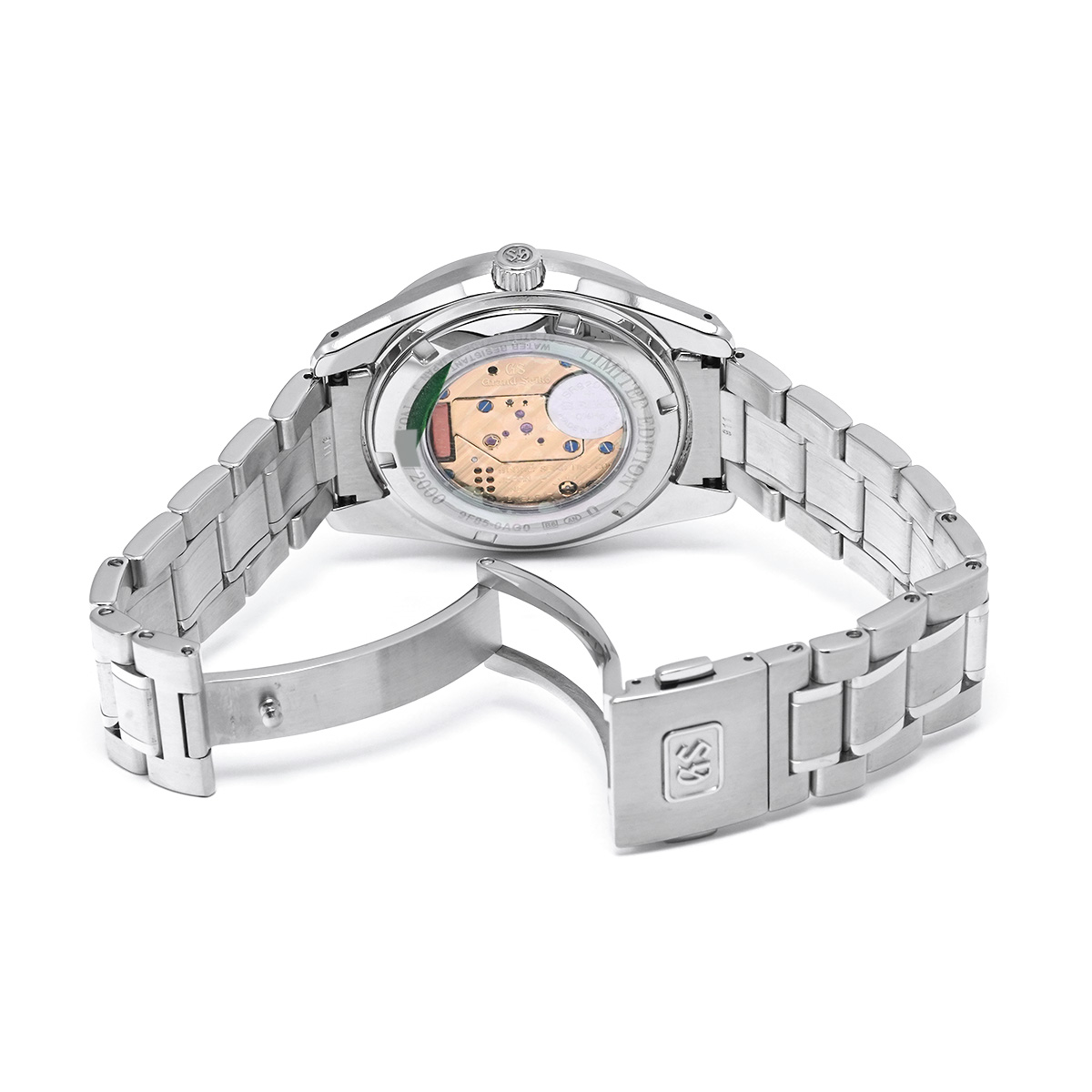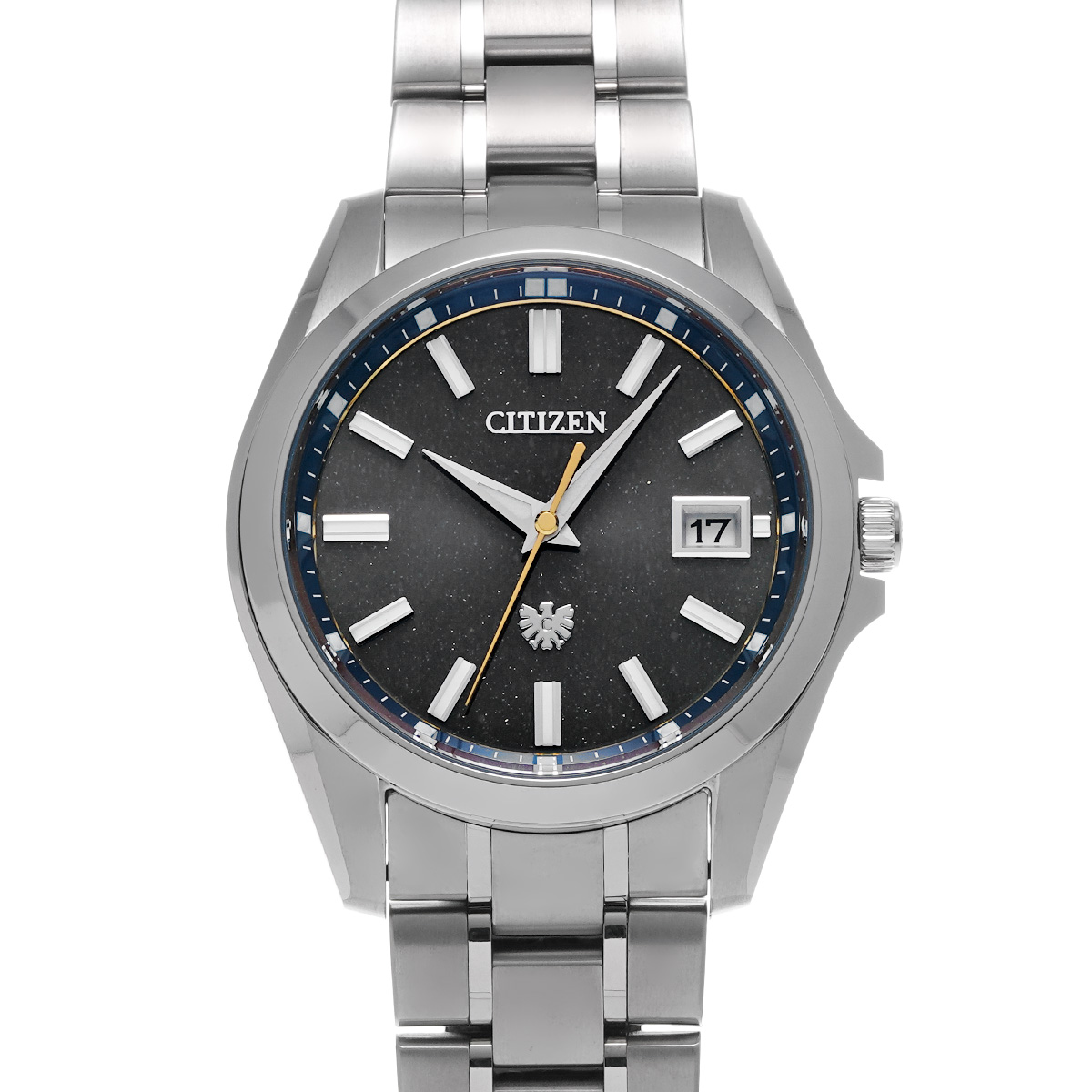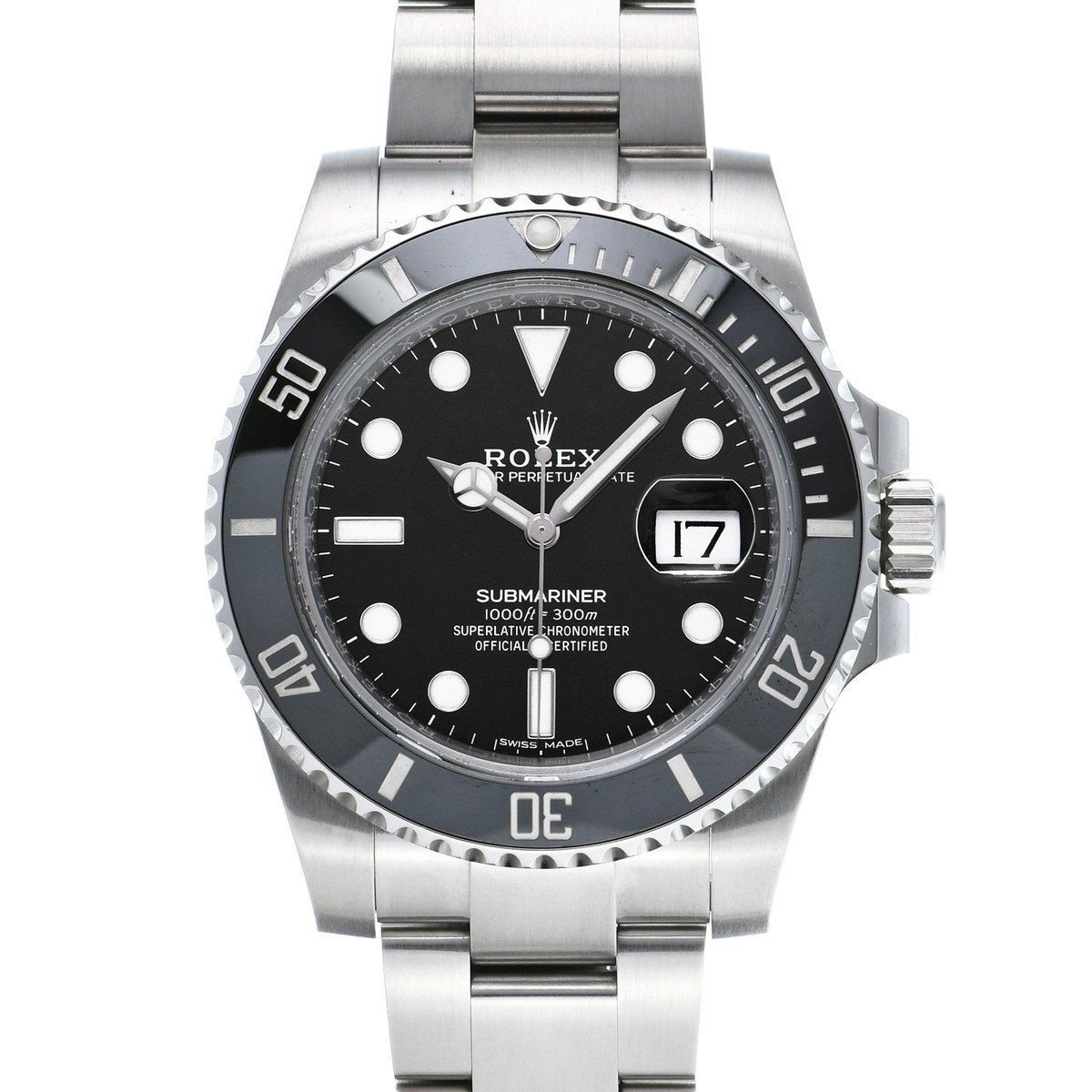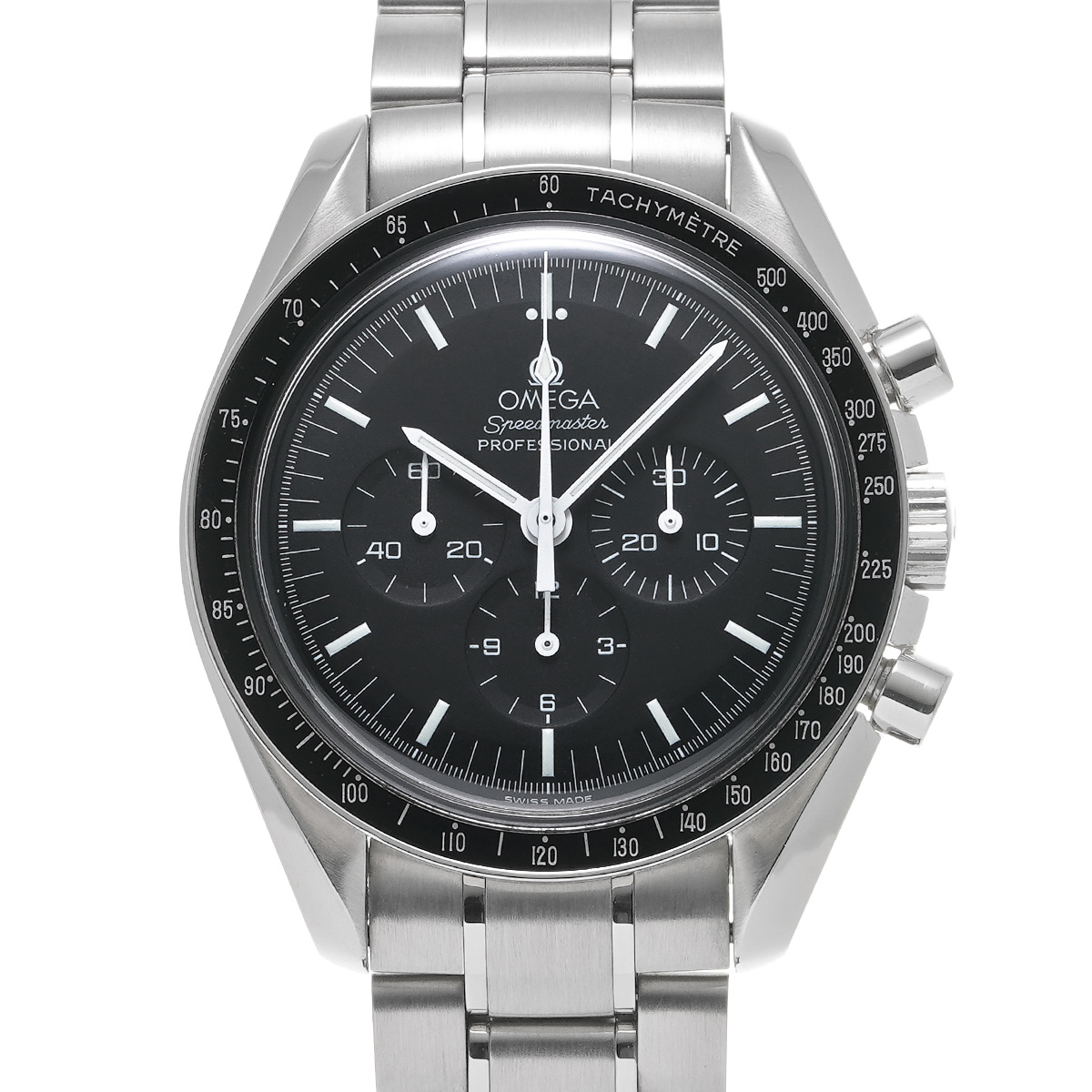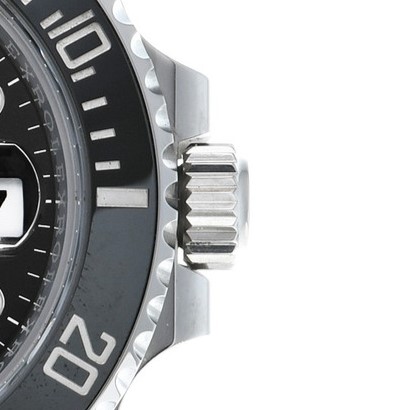ブランド時計の基礎知識
腕時計を選ぶ際に知っておきたい用語から買った後の注意点まで、腕時計に関するいろいろな基礎知識をご紹介します。


時計の種類
■機械式時計
機械式時計は、巻き上げたゼンマイが徐々に解ける力を用いて動作し、手巻きと自動巻きの2つのタイプが存在します。
⚫︎ 手巻き
リューズ(時計の側面にある小さなつまみ)を手動で回してゼンマイを巻き上げます。巻き上げる動作により、ゼンマイにエネルギーが蓄えられ、徐々に解けることで時計の針を動かします。
⚫︎ 自動巻き
腕の動きを利用してゼンマイを自動で巻き上げることが特徴です。時計内部に配置されたローター(重り)が腕の動きに反応して回転し、その動きをゼンマイの巻き上げに変換します。自動巻き最大のメリットは、日常的に着用されている限り、ほとんど手動で巻き上げる必要がない点。腕に装着して約8時間の活動で充分にエネルギーを蓄え、これで約1日から2日間時計を動かすことができます。
クォーツ時計
クォーツ時計はゼンマイを使わず、電池をエネルギー源として動きます。機械式時計と比較して、クォーツ時計は高い精度が特徴です。時計内部に搭載された水晶は、電池から供給される電気によって正確な振動リズムを生み出し、時間を刻みます。電池がなくなるまで動きますが、電池の寿命は使用している時計のメーカーやモデルに依存し、通常は約1~2年で交換が必要になります。電池が切れた際には、電池交換が必要です。
日光や室内の照明から光エネルギーを受け取り、電力に変換して動作します。従来のクォーツ時計のように定期的な電池交換の必要がほとんどなく、環境に優しく経済的です。日常生活の中で自然に充電されるため、クォーツ時計の場合に必要となる電池の交換や、機械式時計の場合に必要となる巻き上げを気にすることなく使用できます。 クォーツ時計の商品一覧を見る
ソーラー時計
日光や室内の照明から光エネルギーを受け取り、電力に変換して動作します。従来のクォーツ時計のように定期的な電池交換の必要がほとんどなく、環境に優しく経済的です。日常生活の中で自然に充電されるため、クォーツ時計の場合に必要となる電池の交換や、機械式時計の場合に必要となる巻き上げを気にすることなく使用できます。 ソーラー時計の商品一覧を見る
時計の各部位のパーツ名称
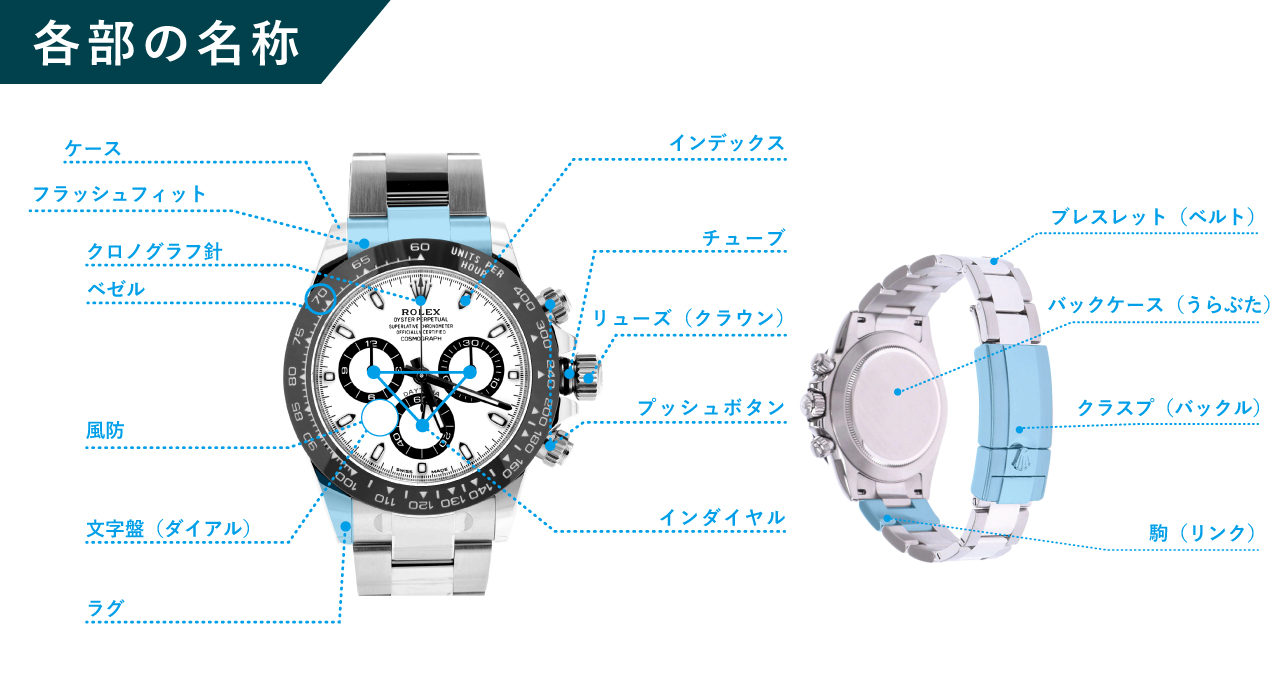
ケース
一般に「本体」や「側面(ガワ)」と呼ばれる部分。機械(ムーブメント)やその他の内部機構を収納し、外部からのチリ、ホコリ、衝撃を防ぐ重要な役割を果たします。時計の耐久性と信頼性を保つためには、ケースの質と構造が非常に重要です。
ベゼル
風防の周りに取り付けられ、ケース上部にある周囲の縁の部分。ベゼルは、風防と文字盤をダメージや衝撃から保護する重要な役割を果たします。ベゼルには様々な種類があり、構造としては固定式や回転式、逆回転防止のものが、機能としてはタキメーターやGMTなどの種類があります。特に、ダイバーズウォッチなどのスポーツモデルでは経過時間を計測できるダイビングスケール機能があります。
ラグ
時計のケースとブレスレットまたはベルトを接合する部品。ケースと一体化しており、ラグは通常、ケースと同じ素材で作られています。時計のデザインや外観に一貫性をもたせる役割を果たしています。
インデックス
ダイアル上にある時間を示す目盛りや数字。インデックスのデザインにはシンプルな棒状のバーインデックスや、直感的に読みやすいアラビア数字のアラビックインデックスなどの種類があります。
ムーブメント・キャリバー
時計の心臓部とも言える動力機構。大きく分けて、機械式(手巻きおよび自動巻き)とクォーツ(電池動力)の二つのタイプに分類されます。 各ムーブメントはメーカーによって特定の型式番号やキャリバー番号で識別されます。この番号は「Cal.」の略称で表されることが多く、時計の技術的特性や性能を示す重要な指標となります。キャリバー番号は、時計の設計や製造においてその個性を反映し、同じモデル内でも異なるムーブメントを選択することで多様な機能や特性を提供できるため、時計選びの際に重要な報となります。
ベルト
時計を腕に固定するための部分。一般にストラップ、バンドとも呼ばれます。この部分は時計の着用感や外観に大きく影響し、金属、革、合成素材など、さまざまな素材で作られています。特に金属製のものはブレスレットと称され、ステンレススチール、チタン、さらには貴金属など、様々な素材で作られていることが多いです。
カレンダー
ダイヤル上の日付が表示される部分。多くのモデルには追加の機能として日付や曜日の表示が備わっており、この機能は「デイト」と呼ばれています。 さらに進んだ機能として、日付だけでなく曜日も表示する「デイデイト」機能を持つ時計もあります。このタイプの時計は、ダイアル上の別の窓を通して、日付と曜日の両方を一目で確認できるように設計されています。
リューズ(竜頭)
時計の側面にある突起部で時計の機械を操作するための重要な部品。ゼンマイを巻き上げることによって時計に動力を供給する役割を果たします。リューズを回転させることで、内部のゼンマイが巻かれ、時計の機構が動き始めます。さらに、リューズは時刻調整の機能も担っています。リューズを引き出すことで時計の針を動かし、正確な時間に設定することが可能です。
ダイアル
時計の顔とも言える部分で、針やインデックスなどが配置された部分。フェイスと呼ばれる場合もあります。文字盤のデザインは多岐にわたり、時計の全体的なスタイルや読み取りやすさに大きく影響します。さらに、文字盤には時計のブランド名やロゴ、時には日付や曜日を表示する窓、クロノグラフのインダイヤルなど、時刻以外の機能や情報を表示する要素が記載されている場合が多いです。
風防
文字盤の上に設置されている透明なカバー部分。時計の文字盤と内部機構を外部の衝撃や摩擦、水や塵から守る役割を担っており、素材や加工技術によってその性能が大きく異なります。風防の素材にはガラス、プラスティック、そしてサファイアガラスなどが代表的です。
エンドリンク(弓カン、エンドピース)
ケースとブレスレットやストラップを滑らかにつなぐ部品。この設計により、ケースとブレスレットの間の遷移がほとんど全く感じられず、一体感のある外観を実現しています。外観だけでなく、着用時の快適さにも貢献しており、ブレスレットやストラップが腕にしっかりとフィットし、スムーズな着け心地になります。ロレックスではフラッシュフィットと呼ばれています。
駒(コマ)
ブレスレットを構成する個々の小さなセクションやパーツ。ブレスレットの全長を調整し、着用者の腕にぴったりとフィットさせるために重要な役割を果たします。腕周りに合わせてブレスレットの長さを調整する際には、駒を追加したり、取り除いたりすることで、サイズを調整します。
クラスプ・バックル
ブレスレットやストラップを腕に固定し、脱落を防ぐためのパーツ。バックルの種類によっては、微調整機能が備わっているものもあり、これにより腕周りのサイズを細かく調整し、完璧なフィット感を得ることが可能です。
時計のよくある機能や用語
精度
時計の精度は使用環境や姿勢差など様々な要因によって影響を受けます。クォーツ時計は比較的精度が高く、「月差」という1ヶ月間の誤差が±15秒程度に収まることが一般的です。これは電池を動力源とするクォーツの振動数の安定性によるもので、日常生活で使用するには十分な精度を提供します。
一方、機械式時計は「日差」と呼ばれる1日に±5~20秒程度の誤差が生じることがあります。これは新品や中古品に関わらず一般的な範囲であり、機械式時計の精度にはこの程度のばらつきがあることが認識されています。また、アンティークの機械式時計に至っては、その精度の誤差は更に大きく、1日に約±30秒から2分程度の誤差が生じる場合があります。これは当時の設計・製造技術自体の限界や、機構の老朽化や個体差によるもので、時計ごとに異なります。
機械式時計では、ゼンマイの巻き上げ量も精度に大きく影響します。ゼンマイが基準の巻き上げ量に満たない場合、時計の精度が著しく狂うことがあります。そのため、使用前にはゼンマイを十分に巻き上げることが推奨されます。
防水性
時計には防水性能が備わっているモデルがあり、その使用目的や環境に合わせて異なる性能の目安が設定されています。「m」はメートル単位で、防水性能の目安を示していますが、直接的な水深を意味するわけではありません。防水性能を維持するためには、リューズがしっかりと締まっていることを確認し、定期的なメンテナンスを怠らないことが重要です。非防水の時計は、最小限の水分にさらされる状況でも浸水のリスクがありますので、注意が必要です。
※中古品やアンティーク時計は、経年変化により新品時の防水性能が低下している可能性があります。
⚫︎ 30m〜50m防水:日常生活防水と呼ばれ、汗や雨、手洗い時の水しぶきに耐えられますが、入浴や豪雨での使用、水泳などには避けましょう。
⚫︎ 100m〜200m防水:日常生活での偶発的な水への浸かり(例えば雨に濡れる、手洗い時の水しぶきなど)には耐えられますが、水泳やダイビングといったマリンスポーツでの使用には適していません。一時的に軽く水に浸かる程度であれば耐えうるものの、持続的な水中活動や高い水圧がかかる環境下での使用には対応していません。
⚫︎ 200m以上の防水:マリンスポーツやダイビングにも適していますが、使用方法によっては水圧が防水性能を上回ることがあり、特にダイバーズウォッチでない場合は水中でのハードな使用は推奨されません。 防水性のダイバーズ商品一覧を見る
クロノグラフ
ストップウォッチ機能を備えた複雑な時計機構です。スタート、ストップ、リセットの操作が可能な追加ボタンにより、時間を正確に計測できます。クロノグラフはスポーツイベントでの使用に非常に適しており、レースやダイビング、飛行などの精密な時間計測が必要な場面で利用されます。また、その機能性と洗練されたデザインから、日常生活での使用にも適しており、ビジネスシーンでもカジュアルなシーンでも活躍します。
ハック機能
ハック機能とは、時計の正確な時間設定を可能にするためのもので、リューズを最も引き出した位置で秒針が停止する機能を指します。1960年代以前の時計では、搭載していない時計が主で、現行品でも搭載していない場合も多いです。
ねじ込み式リューズ
ねじ込み式リューズとは、時計の防水性能を高めるために設計された特別なリューズの構造です。ケースに対してリューズをねじ込むことで、水や湿気が内部のムーブメントに侵入するのを防ぎます。正しく閉めることで時計の耐水性を大幅に向上させることができるため、水辺での活動や水泳、ダイビングなどに使うダイバーズウォッチに多く採用されています。リューズを閉める際には、まっすぐに押し込みながらゆっくりと締めることが重要です。もし途中で違和感があれば、無理に続けずにリューズを緩めてから再度試みることが推奨されます。無理にねじ込むとねじ山を損傷してしまい、リューズの閉め方が不十分になることで防水性が損なわれたり、最悪の場合内部故障の原因となることもあります。
お取り扱いの注意点:よくある故障の原因
時刻合わせ
通常、時計の針は右回り(時計回り)に動くように設計されています。時刻や日付の調整を行う際には、この方向に従って調整することが推奨されます。左回し(逆回し)に針を動かすと、故障の原因となる場合があります。
日付合わせ
多くの時計では、日付は23時半から3時の間に自動的に変わります。しかし、内部的にはその前から日付変更の準備が始まり、表示が変わった後も歯車の噛み合いとしては引き続き実行が行われています。こうした動作全体の範囲は「日付変更禁止時間帯」と呼ばれ、この時間帯に日付を手動で早送りすると時計の内部メカニズムに負荷がかかり、故障を引き起こす可能性が高まります。そのため、日付調整を行う場合は、この時間帯を避けることが重要です。 日付調整を行う際には、まず時計の針を回して6時を指すようにしてください。これにより午前午後関係なく安全な時間帯となり、安心して日付調整を行うことができます。これらのガイドラインに従うことで、時計の故障を防ぎ、長く愛用することが可能になります。
衝撃
機械式時計の精度を左右する核心部品であるひげゼンマイは、その厚さがおよそ0.1mmにも満たない非常に薄くデリケートな金属のコイルです。ひげゼンマイを含む時計内部の部品は非常に微細で繊細なため、強い衝撃によって簡単に変形や破損が生じる可能性があります。スポーツや激しい作業時は時計を外すことが大切です。時計をぶつけたり、落としたりすることは、機械式時計に限らず、どのタイプの時計においても故障原因となり得ます。
磁気
日常的に使用していても、電子機器の影響で時計が止まったり遅れが生じたりすることがあります。これはムーブメントのパーツが磁気を帯びて互いを引きつけ反発する事で起こるもので、「磁気帯び」といいます。もし磁気帯びをしてしまった場合、特殊な装置で磁気を取り去ることもできますが、これはあくまで応急処置の簡易作業で、磁気を帯びている部品の箇所によってはオーバーホールや部品交換などが必要になります。時計を携帯電話、パソコンやテレビのスピーカー、電子レンジ、そしてバッグなどのマグネット留め具等の強い磁気を発する製品の近くに置いたり、近付けないようご注意ください。
温度、紫外線
温度変化は時計の精度に影響を及ぼすことがあります。特に機械式時計は、暑い場所では遅れがちに、寒い場所では進みがちになる傾向があります。急激な温度変化は、風防が曇る原因となるほか、時計のケース劣化を招くこともあります。また、直射日光の紫外線は文字盤の色褪せや劣化の原因にもなるため、注意が必要です。
薬品等の影響
時計は精密な機械であり、外部からの化学的な影響に対して非常に敏感です。特に酸性やアルカリ性を持つ水溶液は、時計の金属部分を腐食させたり、表面の仕上げを劣化させるリスクがあります。そのため、こうした薬品が存在する環境での使用や保管には、特別な注意を払う必要があります。防水性能に自信がある場合であっても、直接的な接触を避けることを推奨します。
お取り扱いの注意点:人体への影響
金属アレルギー
一般に人体に無害とされる金属であっても、汗などの作用によりイオン化したものが体内に吸収され、アレルギー反応を引き起こすことがあります。着用中や着用後に皮膚に腫れ、かゆみ、かぶれなどの異常が見られた場合は、直ちにその使用を中止し、速やかに医師の診断を受けることをお勧めします。
